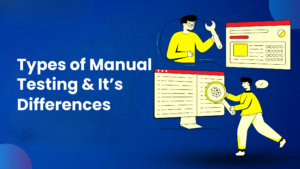

Step-by-Step Guide to Writing Simple Test Cases for Beginners
The importance of writing test cases in software development cannot be underlined. Test cases assist software testers in understanding the requirements and scope of their tests. Continue reading to learn about basic methods for creating test cases.
Here are some important factors to consider while selecting automated testing tools:
- The concept of Test Case
Test cases are a collection of conditional cases that a tester can use to verify whether an application, software system, or one of its components functions as expected.
A test case is a single functional test that a tester performs. It walks them through the test steps. A test case can be thought of as a set of step-by-step instructions for ensuring that something acts as it should.
- Steps for creating a test case
- Determine the goals of your testing procedure.
To begin, you have to understand the software requirements specification. When beginning to design test cases for software features, the first step is to learn about and establish the system’s requirements.
As software programmes develop and undergo regular updates, maintaining test cases becomes increasingly difficult. Updating and altering test scripts, test data, and test environments to correspond with changes in the application under test is what test maintenance entails. Several variables contribute to the problem of enterprise software test maintenance, including
- Identify your software system's performance indicators
You must be familiar with the functional requirements in order to write a competent test script. You must also understand how the programme works, which includes multiple functionality and organisational functions.
- Identify the non-functional requirements.
The third phase is to learn about non-functional components of the software, such as hardware requirements, operating systems, and security concerns. Aside from test data preparation, they must be considered as additional prerequisites.
It is essential to test non-functional needs. For instance, if the software requires a user to fill out forms, you must set a realistic timeframe to ensure that your user does not run out of time while waiting for submission. At the same time, it is critical to check the log-in time to ensure that the user session has not ended, which is known as a security test.
- Create a test case template.
Test case samples and test case examples should incorporate UI, functionality, reliability, compatibility, and performance tests. Each type should be defined in accordance with the application’s logic.
- Describe how the software modules relate to one another.
To figure out the system movement, you must first understand the operation of each module and its relationships with other modules. Test cases should be written to cover the most complex module interactions. As an example: When testing an e-commerce website’s shopping cart feature, you must also test the inventory management system to make sure that the same quantity of purchased products is deducted from the store. Similarly, while dealing with re-testing, you must test the impact on the financial portion of the application as well as the inventory management system.
- A test case's structure
(CI/CD) pipeline helps automate test environment use, saving the time and effort necessary to set up and manage many test environments.
A test case ID
Test Case ID: The value needed to calculate the number of instances needed for testing.
A test case ID
Test Case ID: The value needed to calculate the number of instances needed for testing.
Scope
Depending on the system's functionality, you can divide the functions to generate clearer test cases.
Testing Data
The information that must be prepared for testing.
Steps of the Test
Explain the steps of the test.
Expected outcomes
The outcomes of the previous actions. The outcome is usually PASS, FAIL, or PENDING. In the system context, this is the actual result of the test case.
Comments
When running test cases, this column is used to record screenshots and other relevant information.
- Specify the test case
There are three possible outcomes for each testing value:
- Common test cases:
- Unusual case:
- Case of the Boundary
Finally, understanding and properly writing test cases are essential components of the software development process. Test cases serve as essential tools that help software testers validate the proper operation of applications and systems. Beginners can master the principles of developing test cases by doing a real project. While studying about automation testing, here is the GroTechMinds for those who are looking for real learning while taking up the course. We provide technical-based learning for the automation testing course. We hope you learned some valuable information through this blog.
Learn the art and science of writing codes with GroTechMinds Best Automation Testing course, which gives a strong pathway to becoming successful in the automation testing industry. Our course will help aspirants land a successful career in the software testing industry by learning from industry experts and real-time projects.
Consult Us


















